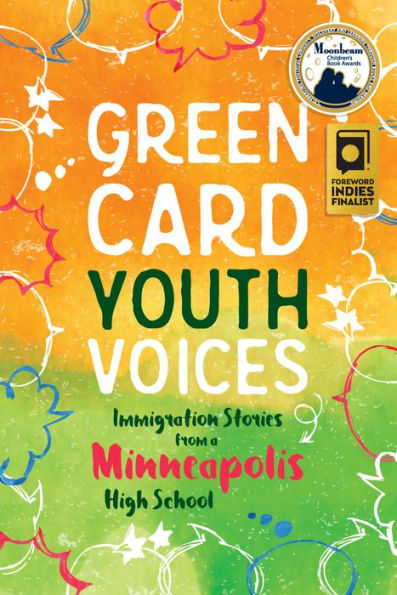Immigration Stories from a Minneapolis High School: Green Card Youth Voices
Green Card Youth Voices: Immigration Stories from a Minneapolis High School is a unique collection of thirty personal essays written by students from Wellstone International High School. Coming from thirteen different countries, these youth share stories of family, school, change, and dreams. The broad range of experiences and the honesty with which these young people tell their stories is captured here with inspiring clarity. Although their reasons for immigrating are vast, a common thread united them; despite tremendous tribulation, these young people continue to work toward the futures of which they dream. With the included study guide and glossary, Green Card Youth Voices is an exceptional resource for English and social science classes, adult learners, ESL classrooms, and book clubs. Each personal essay is accompanied by a first-person video narrative available online.
"1129803681"
Immigration Stories from a Minneapolis High School: Green Card Youth Voices
Green Card Youth Voices: Immigration Stories from a Minneapolis High School is a unique collection of thirty personal essays written by students from Wellstone International High School. Coming from thirteen different countries, these youth share stories of family, school, change, and dreams. The broad range of experiences and the honesty with which these young people tell their stories is captured here with inspiring clarity. Although their reasons for immigrating are vast, a common thread united them; despite tremendous tribulation, these young people continue to work toward the futures of which they dream. With the included study guide and glossary, Green Card Youth Voices is an exceptional resource for English and social science classes, adult learners, ESL classrooms, and book clubs. Each personal essay is accompanied by a first-person video narrative available online.
20.0
In Stock
5
1

Immigration Stories from a Minneapolis High School: Green Card Youth Voices
176
Immigration Stories from a Minneapolis High School: Green Card Youth Voices
176
20.0
In Stock

Product Details
| ISBN-13: | 9781949523003 |
|---|---|
| Publisher: | Green Card Voices |
| Publication date: | 04/23/2019 |
| Series: | Green Card Youth Voices |
| Pages: | 176 |
| Sales rank: | 1,019,999 |
| Product dimensions: | 5.90(w) x 8.90(h) x 0.40(d) |
| Age Range: | 12 - 17 Years |
About the Author
From the B&N Reads Blog
